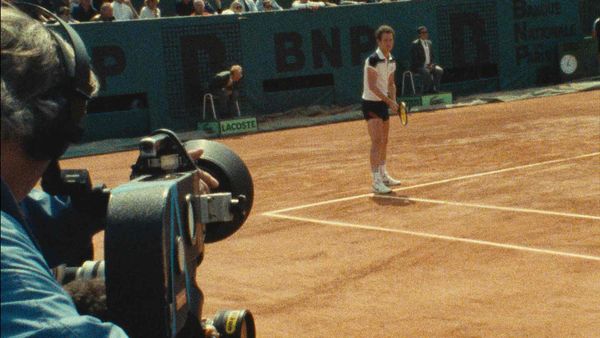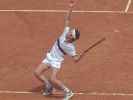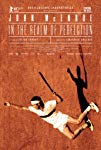Eye For Film >> Movies >> John McEnroe: In The Realm Of Perfection (2018) Film Review
John McEnroe: In The Realm Of Perfection
Reviewed by: Jennie Kermode

First things first: this is not a John McEnroe biopic, nor is it a dynamic new presentation of the 1984 French Open tennis final between McEnroe and Ivan Lendl - at least not conventionally so. If your love of tennis is centred on the energy and excitement of a dramatic match, if you watch it for fun, you're likely to be disappointed. If, however, you're interested in the technical details of the sport or the process of filmmaking, you may find Julien Faraut's unapologetically artsy film fascinating.
As much as it is a film about McEnroe, this is a film about Gil de Kermadec, the legendary French documentarian who was intrigued by the sport and insisted on getting unprecedented access to the match in question so that he could capture it as no-one else did. Barely acknowledging Lendl's presence, he focused intensely on McEnroe, attracting some of the notoriously outspoken player's ire in the process. He was attempting to capture something subtly different about this sportsman, who was then at the top of his game - something no other player had. Faraut doesn't treat this as a secret. He explains it in the very early stages of this film with the help of computer animation. McEnroe didn't move like other players, didn't follow a formula. Despite being at the very top level, where the stakes couldn't be higher, he played instinctively, moving in a slightly irregular way that made him unpredictable and very, very difficult to beat.

Even if you're not a tennis fan, Faraut's demonstration of this secret is intriguing. Once one sees it, there's a compelling beauty to the motion involved; and in a sport where possible moves have been refined over and over again almost like chess, the idea that somebody could have beaten the system by playing in such a human way is almost magical. McEnroe seems to have approached his game from somewhere quite different from his rivals - almost as an art. Faraut suggests that this may be part of the reason for his temper - his fury at himself when he failed to live up to his own exacting standards, his intense disappointment when he perceived himself being let down by others' carelessness. He draws a comparison with Mozart as portrayed in Milos Forman's Amadeus, Tom Hulce having taken McEnroe as inspiration when preparing for the role, and thereafter music and tennis blend, two threads of the same tapestry, trying to illustrate the divine.
Faraut's film is composed like a piece of music. Lines and visual snippets are repeated, quite deliberately, building a rhythm that ebbs and flows like the dynamics of the match even when we are kept in the dark about how that match is actually progressing. Faraut observes, also, the very different emotional landscape of such a contest from the player and spectator's points of view. If you've ever played professional support or known people who do, you'll know the emotional rollercoaster involved, the pressure, the desperate grasping for focus at critical moments. Fun is the last word that comes to mind.
People who seek out this film for the wrong reasons will probably loathe it. It doesn't go out of its way to try to connect. Like McEnroe or Mozart, it simply is. Players may well learn from it but to try and imitate what it reveals would be to miss the point. Faraut strips down tennis; De Kermadec's footsage strips down McEnroe's soul. What remains is intuition, movement, striving - sport, art and religion become one.
Reviewed on: 06 Nov 2018
















